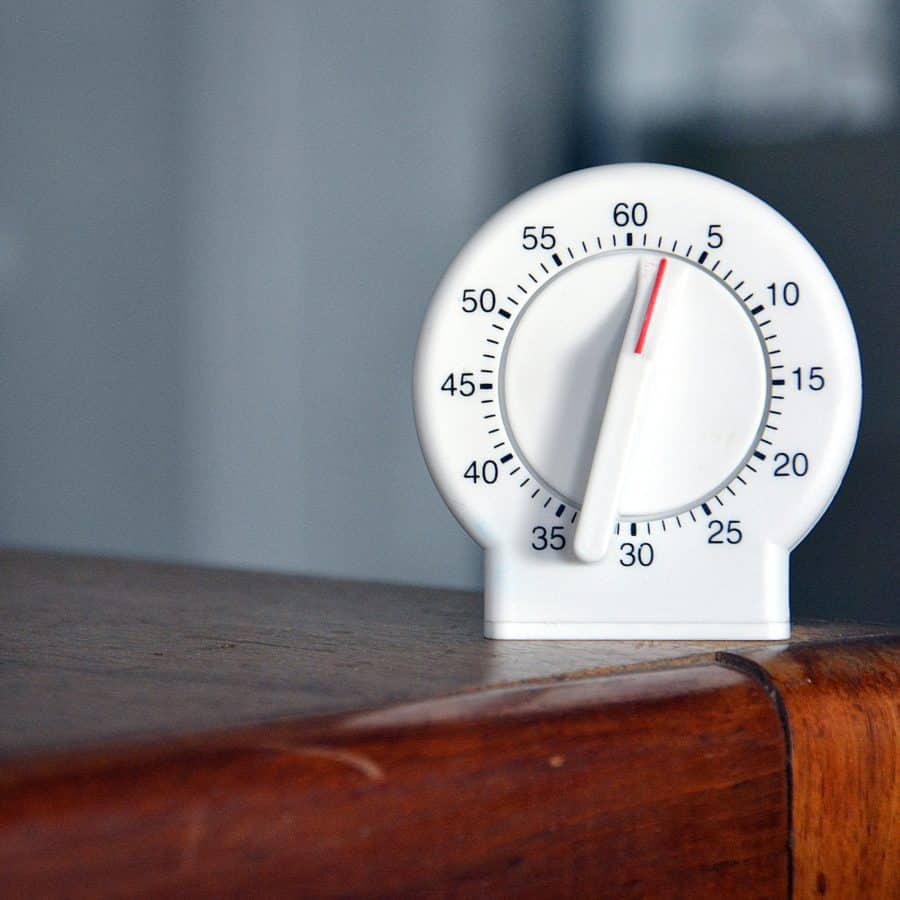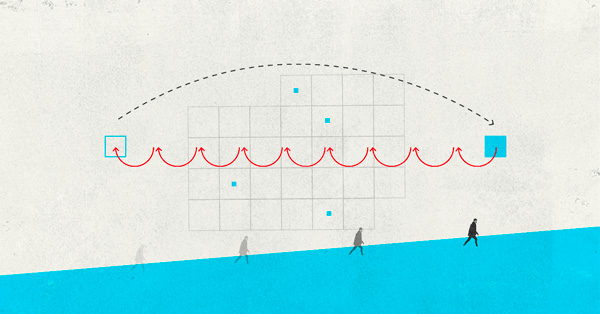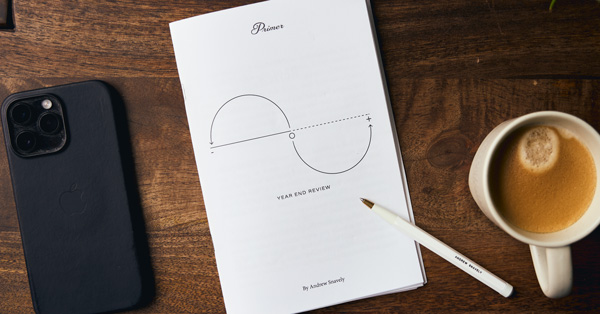If you’re reading this, chances are you’re one of the 44 million Americans who have a side hustle.
More and more, people are turning to freelance and entrepreneurial work to cover expenses and those between the ages of 18 and 26 are most likely to earn money on the side.
Whether you’re just trying to get a little extra in the bank or attempting to turn your passion into your profession, you’ve probably run into the big problem of hustlers everywhere: how do you find the time to do it all?
Everywhere you look on the web, there’s someone telling you: “you should really have a side hustle,” and a cottage industry on what your side hustle should be (nude art model tops a lot of lists).
Odds are you already know the “what.” You just don’t know the how.
Everyone has the same 24 hours in their day. So how come it feels like some people have a time machine that helps them get more done?
Real talk: it’s not how much time you have. It’s how you use it. Our phones and laptops are great tools for work – but when we use the same devices for fun, they become productivity pitfalls.
It’s even harder when you already work a job and are trying to carve out time for your own self-directed second career.
Luckily, there are some simple techniques you can use to stop getting sidetracked and find your focus.
Read on for thirteen proven tips and techniques to boost your productivity, increase your focus, and avoid some of the most common pitfalls you’ll encounter trying to launch – and maintain – a side hustle.
Some of these tricks can become an entire lifestyle (like the Pomodoro system); others will help you recapture just a few minutes every day. Mix and match until you find a combination that works for you!
Defeat Distraction
1. Schedule Digital Silence
By now, you know that social media was designed to be addictive.
So how do you reclaim your time and attention span, and start generating high-quality work? If you really have trouble not checking your accounts every few minutes, try scheduling a period of digital silence: no apps, emails, or other high-tech time sucks.
It could be just fifteen minutes every morning to set your goals for the day, or one day a week when you go offline to put in serious work on your hustle or personal projects. Or alternatively, you could schedule your distraction time. From 7 to 8, for example, you can catch up on your double taps, scrolls, retweets, and swipes. If you want to go even further, you can relegate your vice apps to an old, unused phone. That way you can’t even be tempted since they’re not on the phone in your pocket.
You can go low-tech by setting your phone on airplane mode and working with pen and paper, but let’s be real – you need your devices to be productive!
Which is why tip #2 is so helpful…
2. Defeat Apps With…Apps
There are a number of apps that are designed to help users stay focused – and actually use devices for work instead of farming sims.
You can choose to block your access to certain apps and specific websites, or go for the nuclear options and black out the entire internet (for you, at least).
Freedom allows you to sync what apps, sites, and notification you block, across all your devices. You can schedule blocking (e.g., 9am-11am on Wednesday) so that you can’t take “just five more minutes.”
Cold Turkey is a browser extension that blocks specific pages. Instead of that site, you’ll see a motivational quote that encourages you to keep working. You can whitelist certain sites in case you need them for work.
Focus is a Mac-specific app that blocks entire sites (or just a page), applications, and even games. It also has a schedule function that helps you build up a daily or weekly habit of productivity. If you like the pomodoro technique (more on that in a bit), there’s a special timer.
Stay Focusd(leaving out the “e” saves time) is a Chrome extension that limits the time you spend on productivity-sucking sites. Once you’ve frittered some time away, the sites you select will be blocked for the rest of the day. You can block entire sites, pages, and even specific types of content, like videos.
Self Control is an open source app for Mac devices that puts up an impenetrable wall between you and your distractions. Once you’ve chosen your blacklisted sites and started the timer, you’ll be blocked – even if you restart your computer or delete the app.
Punt Procrastination
3. Get On The Pomodoro System
If you’ve ever watched hours – or days – vanish because you have a task to do, you get it: procrastination can be brutal.
Defined as “actively delaying or postponing something,” over 20% of Americans self-identify as chronic procrastinators.
One proven technique for beating procrastination is to reframe how you approach work.
Sometimes the traditional task-driven to do list can seem overwhelming, which leads to avoidance. But you can spend 25 minutes on a task, right? That’s not even a full episode of Archer. Suddenly that to-do list doesn’t seem too intimidating anymore.
Time management is the Pomodoro Technique’s secret sauce. It’s named for the creator’s tomato-shaped kitchen timer (“pomodoro” is tomato in Italian), and here’s how it works:
Pick a task, any task. Then devote 25 minutes (one Pomodoro) to it, no distractions. Set a timer, and write down any “gotta do this” thoughts that pop into your head – but don’t stop what you’re working on.
When the timer rings, take a break. Then repeat. This teaches you that you can defer distractions, and it also gives you an idea of how much time a task might actually take.
Most powerfully, Pomodoro gets you over the inertia of not being able to begin in the first place.
You can do just about anything for just 25 minutes… and you’ll be amazed at how quickly one 25 minute Pomodoro turns in to another.
4. Break Big Projects Into Tiny Tasks
A big part of procrastination is feeling overwhelmed.
So instead of tackling one big project all at once, break it down into smaller chunks. This is fairly common advice, but there’s a reason you keep hearing it: It works.
You probably won’t realize how powerful it is until you put it into action, so give it a try. Instead of trying to block out 2 hours for an entire project, start to finish, define the first few steps, and complete the first one in 20 minutes while dinner’s in the oven. Make a note of where you stop, and what the next action is, and you’ll be ready to dive right in tomorrow during lunch.
5. Schedule A Hustle-A-Thon
Sometimes breaking a task down into smaller steps works, but sometimes you need the opposite: a big block of time.
Schedule a hustle-thon–one night a month (or once a week, etc.) where you only work on side-hustle-related tasks. Or, as Primer’s editor and founder Andrew does, schedule a workcation: A couple of days set aside to work on a particular task or problem. Get an AirBnB, get out of town and get to work.
To help beat distraction (which turns in to procrastination), utilize the digital blackout tips above.
Act Like You’re At Work Even When You’re Not
You know the saying, “Fake it til’ you make it.” Turns out, that applies equally to making your side hustle a professional reality.
6. Dress for Success for Yourself
While you may be going to an office for your nine-to-five gig, chances are your side hustle happens at home, or maybe at a coffee shop in your neighborhood.
And you probably dress accordingly – because who wants to wear a button up shirt when you can rock sweats?
As it turns out, looks do matter – even if it’s just for yourself.
A nice shirt and trousers (your work uniform) vs. a stretched-out shirt and baggy sweatpants (your relaxing clothes) affects self-perception, according to a study by Joy V. Peluchette and Katherine Karl. They report: “Respondents felt most authoritative, trustworthy, and competent when wearing formal business attire, but friendliest when wearing casual or business casual attire.”
So no, you don’t need to dress up in a suit and tie, but save the pjs for binge-watching old episodes of Game of Thrones.
It also helps to set an intentional workspace.
Work at a desk or table, and save the bed for sleeping. And if you can’t focus at home, find a coffee shop or co-working space. Being surrounded by other productive people will help you be productive, too.
Create Accountability
When you answer to yourself, it’s easy to be a little more lenient – and a hundred little moments of cutting yourself some slack adds up to an incomplete project.
These next few tips are designed to help you treat each task and project like a serious responsibility by creating some self-accountability.
7. Make the Ultimate To Do List
If you’re finding that you’re losing track of appointments or due dates, build out your calendar with sub-tasks, due dates, and reminders.
Wunderlist syncs across your devices and helps you set work and household to-dos, whether you want to share a grocery list or something more complicated.
8. Make Appointments… And Keep Them
Treat your time like it’s important – because it is.
Make an appointment with yourself like you’re scheduling a doctor’s visit or attending your favorite regular gym class. And the more you do this, the easier it becomes and the more you’ll accomplish.
9. Don’t Break The Chain
Consistency is key.
It can be easy to get derailed–and hard to get back on track again. So Don’t Break the Chain!
This is Jerry Seinfeld’s method for success. As the story goes, each January, Seinfeld would hang a calendar on his wall. For every day that he worked on new material, he drew a big red X over the date. Seeing a big red X was pretty rewarding, so he kept doing it. And doing it. And it was so satisfying to see a chain of Xs that he didn’t want to break the chain.
Keeping that momentum was the motivation he needed. So pick a goal, pick the days you’re going to work on that goal, and mark them off in a visually satisfying way. Then keep going.
10. Find An Accountability Buddy
Social scientists have long known that social accountability is one of the most powerful forces acting on human behavior.
It’s the reason why you probably don’t blow deadlines at your job and why you might miss deadlines in the privacy of your side hustle – it’s damned difficult to be productive on your own.
The answer isn’t to just “try and do better” or gut it out in solitude. If you’re consistently not meeting self-set deadlines, it might be time to bring in some outside accountability.
The concept is similar to sponsors in substance-abuse recovery, applied to breaking down barriers in productivity: ask a friend or colleague for regular check-ins about specific tasks or projects.
Schedule the check-ins and don’t miss them. Be honest about your progress and the barriers you face. Even a little bit of outside support, accountability, and input can make a huge difference. Someone you know trying to make it with their own endeavor is a great person to ask.
Don’t Dilute Your Time, Energy, And Capital
Maybe procrastination, distraction, and social isolation aren’t your issue because you’re a social butterfly who knows how to manage your time. In that case, allowing others to dilute your time and energy may be what’s holding you back.
This applies equally to going out on a Thursday night you blocked out for side hustling as it does falling under the siren spell of online gurus – read on for how to defeat these pitfalls.
11. Say No
We all do it: agree to go somewhere or do something out of guilt or a feeling of obligation.
Well, try saying “no” to being a yes man.
Stop agreeing to commitments you don’t really want to do, and put that time to better use. This doesn’t mean isolating yourself from friends or family, but if you don’t want to go bowling because you’d rather be working there’s no shame in that.
12. Stop Studying Your Hustle…And Start Hustling
One of the most insidious procrastination habits (and one of the hardest to break) is setting the stage to work.
This might not sound so bad – there’s nothing wrong with being prepared – but if you spend so much time tidying your desk or watching instructional videos on a technique, that you run out of time to actually work, it’s a problem.
There comes a time when you have to stop studying and start doing. Yes, Youtube, podcasts, and other resources have a wealth of material that’s useful for aspiring hustlers but the glut of free info means that it's easy to spend more time learning about someone else's success than actually working towards your own.
So get out there. Test things out, make mistakes, learn on the go. Just do the thing.
13. Never Pay To Start A Side Hustle
There are many self-styled gurus and “leadership” coaches out there who will happily take your money, for little to no benefit.
Seek out a real-world mentor who will support and guide you, no strings attached.








![It’s Time to Begin Again: 3 Uncomfortable Frameworks That Will Make Your New Year More Meaningful [Audio Essay + Article]](https://www.primermagazine.com/wp-content/uploads/2025/01/begin_again_feature.jpg)









